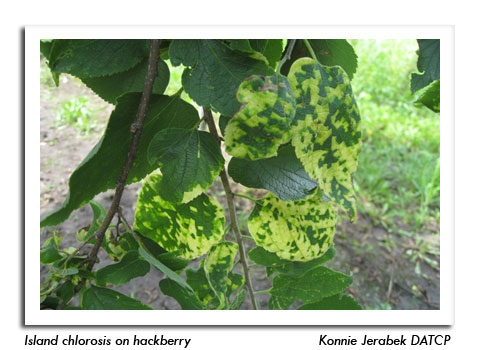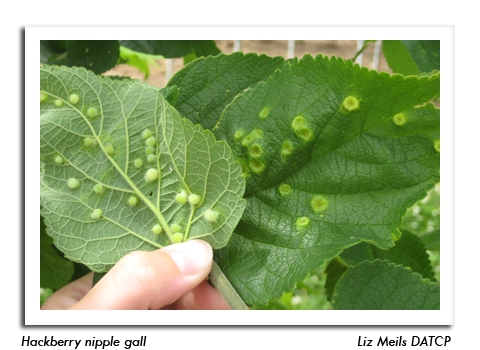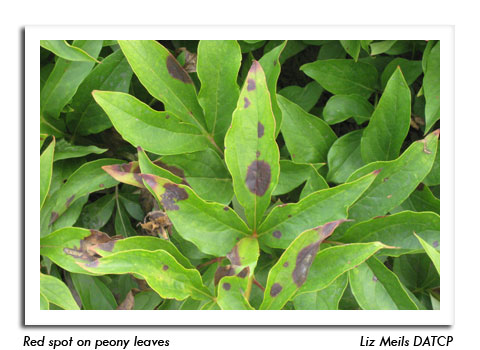
 |
|
|
Nursery & Forest
Volume 57 Number 18 Date 08/16/2012 ISLAND CHLOROSIS - This recently identified virus is infecting hackberry trees at nurseries in Dodge, Ozaukee and Washington counties. Symptoms include blocky, bright yellow spots on the leaves that follow the veins, with a distinct margin between the green and yellow areas. Severely affected foliage turns mostly yellow by late summer. The disorder has long been suspected of infecting hackberries but official confirmation was not made until 2008. It is thought to be spread by seed and insect probing, but much is still unknown. As with all viral diseases, there are no practical curative treatments. Maintaining tree vigor is the best preventative measure. HACKBERRY NIPPLE GALL - Many hackberry trees throughout the state are showing trace to moderate numbers of nipple galls, formed by the hackberry nipple gall psyllid. The characteristic galls develop on the undersides of the leaves in response to feeding by a tiny, yellowish-orange psyllid nymph inside. Hackberry is the only known host of this psyllid. PEONY RED SPOT - Peonies at a nursery in Crawford County are exhibiting late-season symptoms of this fungal disease, namely large, irregular blighted areas on the leaves. The lesions first appear in spring as circular, reddish-purple leaf spots. Since all above-ground portions of peonies are susceptible to red spot, cutting foliage back to ground level in fall is strongly recommended. Fungicides are effective, but only if applied to the soil around plants in spring, when new shoots are 2-4 inches high. A second post-emergence application may be necessary. --Liz Meils, DATCP Nursery Inspector GYPSY MOTH - Seasonal workers have removed 14% of the estimated 19,000 traps placed this year and reported a total of 105,583 moths as of August 15. Although numbers in the western counties remain low, there appears to have been a very large moth emergence in northern to northeastern Ashland and Bayfield counties. Dispersal of moths from these areas may lead to a significant increase in moth counts in northern Sawyer and Washburn counties. Final results of the annual trapping survey will not be available until November. --Nkauj Vang, DATCP Gypsy Moth Program 


|
|
|